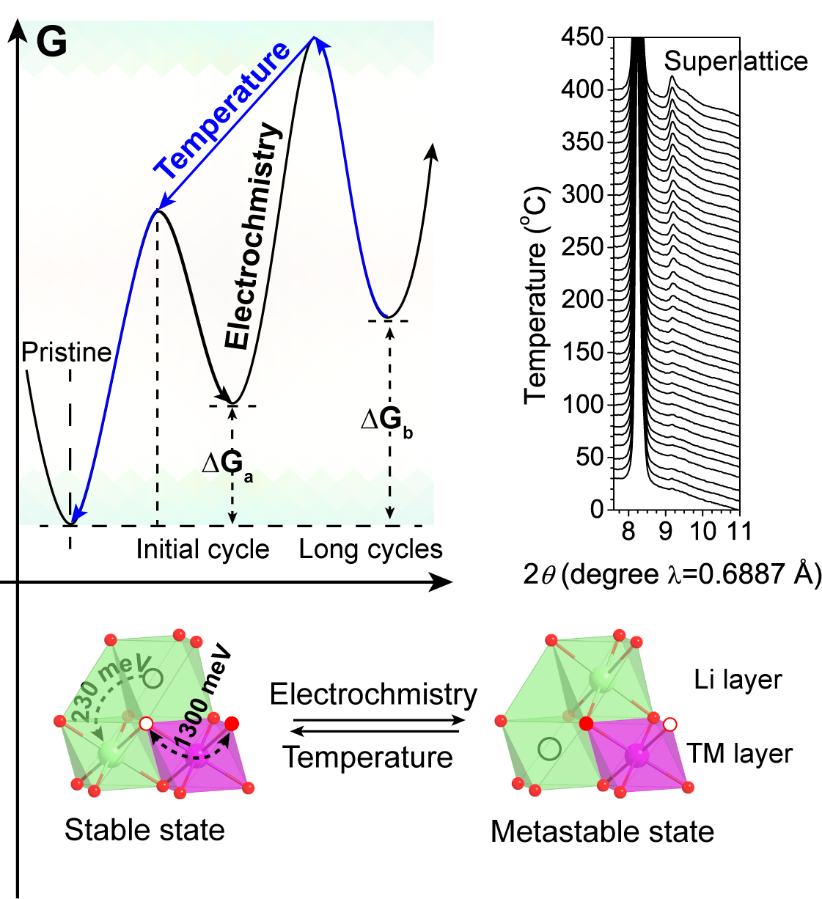A research group led by Prof. LIU Zhaoping at the Ningbo Institute of Materials Technology and Engineering (NIMTE) of the Chinese Academy of Sciences (CAS), revealed that the metastable state of cycled lithium-rich (Li-rich) layered cathode oxides, which stems from structural defects, accounts for the voltage decay of rechargeable lithium-ion batteries (LIBs), in cooperation with researchers at the University of California, San Diego, Brookhaven National Laboratory and other institutions. The study was published in Cell Reports Physical Sciences.
In recent decades, rechargeable LIBs have commercially dominated the portable electronics market, and gradually evolved into the most encouraging market areas for electric vehicles (EVs). However, the energy density and cycle life of state-of-the-art LIBs are limited by low capacities of classical layered oxides, thus have to be further enhanced to satisfy commercial demands for transportation applications. Furthermore, voltage decay upon cycling in Li-rich layered cathodes remains the most hindering obstacle, in which defect electrochemistry plays an indispensable role.
Delving into the structure mechanism of cycled Li-rich layered cathode oxides, the research group revealed the unique metastable structure of cycled anionic redox-based cathodes and the impact of thermal energy on energy recovery after extended cycles. The researchers adopted an effective approach, mild heat treatment, to drive the metastable state close to the pristine state. Density Functional Theory (DFT) calculations of Li-rich layered oxide structure for different states served to illustrate that the cycled state with defects is a dynamical system. Besides, a direct causation between structural defects and voltage decay in Li-rich layered oxides was demonstrated.
The study illuminated metastability and reversibility of Li-rich layered oxides, providing feasible and efficient solutions for the voltage decay in designing Li-rich layered cathode materials for rechargeable LIBs.
This work was financially supported by the National Key Research and Development Program of China (No. 2016YFB0100100), National Natural Science Foundation of China (No. 21703271 and 21773279), Key projects in Cooperation between CAS and Department of Energy, USA (CAS-DOE, No. 174433KYSB20150047), and Key Projects on “Science & Technology Innovation 2025” in Ningbo (No. 2018B10081), etc.

Fig. Schematic illustration of the Gibbs free energy profiles for the conversion, in situ synchrotron X-ray diffraction and DFT calculations for different states in the Li-rich layered oxide structure (Image by NIMTE)
Contact
HUANG Ye
Ningbo Institute of Materials Technology and Engineering
E-mail: huangye@nimte.ac.cn

